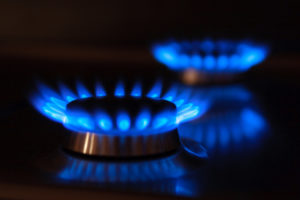 Natural gas fell on Friday, paring its weekly gain, as short-term weather forecasts called for overall mild weather across most of the US high-consuming areas during the weekend. However, a smaller-than-expected jump in nationwide natural gas inventories in the seven days to July 25th and a warming trend expected to start early next week kept prices supported, allowing the power-plant fuel to score a minor weekly advance after it lost almost 9% in the previous two five-day periods.
Natural gas fell on Friday, paring its weekly gain, as short-term weather forecasts called for overall mild weather across most of the US high-consuming areas during the weekend. However, a smaller-than-expected jump in nationwide natural gas inventories in the seven days to July 25th and a warming trend expected to start early next week kept prices supported, allowing the power-plant fuel to score a minor weekly advance after it lost almost 9% in the previous two five-day periods.
On the New York Mercantile Exchange, natural gas futures for settlement in September fell by 1.12% on Friday to $3.798 per million British thermal units, having shifted in a daily range between $3.877 and $3.781 per mBtu. The energy source added 1.45% on Thursday after the EIA reported a smaller-than-expected jump in inventories last week, but Fridays losses trimmed its weekly advance to 0.3%.
The government agency said on Thursday that nationwide US natural gas inventories rose by 88 billion cubic feet in the seven days through July 25th. Although this was almost double the five-year average gain of 46 billion cubic feet, the build beat analysts projections for a jump in the range between 90 and 94 bcf.
Total gas held in US storage hubs rose to 2.307 trillion cubic feet, narrowing the deficit to the five-year average of 2.948 trillion to 21.7% from 23.5% a week earlier.
Due to this weeks mild weather, the blue fuel will likely see a sizable injection for next week’s report as well, which will cover the period to August 1, analysts at NatGasWeather.com said. However, a gradual warm-up starting early next week and extending throughout August is expected to begin lifting prices.
US weather
According to NatGasWeather.com’s weather forecast for the August 1 – August 7 period, temperatures over most of the US will begin to gradually edge higher late this week, paving the way for a slightly warmer trend. Currently, readings in the country’s central and southern parts are below normal after an unseasonably cool air mass pushed deep into Texas and the Southeast, ensuring comfortable readings and lower-than-usual cooling demand. As we have reported in the previous days, the western and southernmost areas of the country remain warm to hot, inducing moderate-to-high local electricity demand to power air conditioning.
In the time span between August 8th and August 14th, NatGasWeather.com expects high pressure to set up over the eastern, southern and western parts of the country, with temperatures rising to between 90 and 100 degrees Fahrenheit. Humid conditions over the high-consuming southern states will further add to strong seasonal cooling demand.
The Midwest and Northeast will see readings climbing into the the 80s and lower 90s. However, the country’s northern areas will remain vulnerable to cooler Canadian weather systems that will probably attempt to push into the US around the middle of August. In case the ridge holds off the cool blast, the pattern will remain quite warm and drive significant cooling demand in the region as well. The remaining portion of the country will see warm weather inducing seasonally high power demand, starting at moderate levels early next week.
According to AccuWeather.com, the high in New York on August 5th will be 82 degrees Fahrenheit, 2 below usual, before peaking at as much as 90 degrees on August 12th, or 7 above the average. Chicago will see a mostly sunny week with cooler-than-normal weather. Readings will peak at 77 degrees on August 5th, compared to the average of 83 degrees, and the next two weeks are expected to see mostly seasonal or little-below-seasonal readings, apart from several days with above-average readings.
To the South, temperatures in Houston will peak at 92 degrees on August 5th, close to the average of 93, and will remain overall seasonal throughout the next two weeks, before surging to 98 degrees on August 17th, 5 above seasonal. On the West Coast, Los Angeles will see readings jumping to as much as 82 degrees on August 5th, 3 below normal, and will remain at these levels through August 9th. Starting from August 10th, temperatures will become higher than usual through the end of the month, reaching a peak of 88 degrees Fahrenheit on August 23rd, compared to the average of 85.
Technical support and resistance levels
According to Binary Tribune’s daily analysis for Monday, the central pivot point stands at $3.819. In case natural gas for settlement in September penetrates the first resistance level at $3.856 per million British thermal units, it will encounter next resistance at $3.915. If breached, upside movement will probably attempt to advance to $3.952 per mBtu.
If the energy source drops below its first resistance level at $3.760 per mBtu, it will see support at $3.723. If the second key support zone is breached, the power-station fuel’s downward movement may extend to $3.664 per mBtu.





